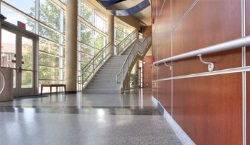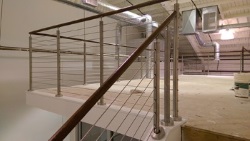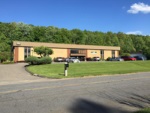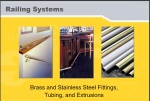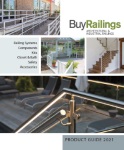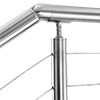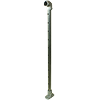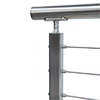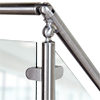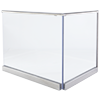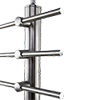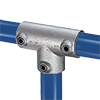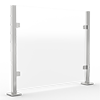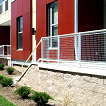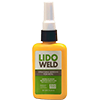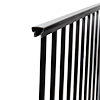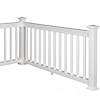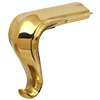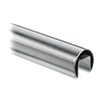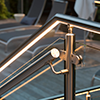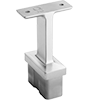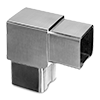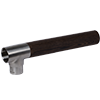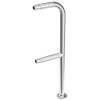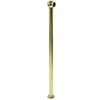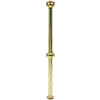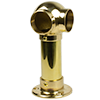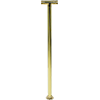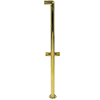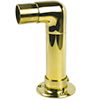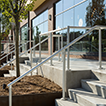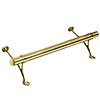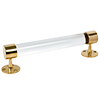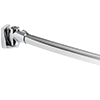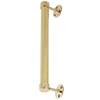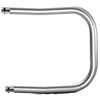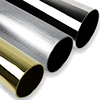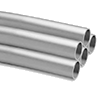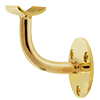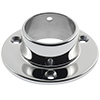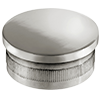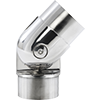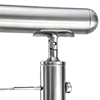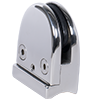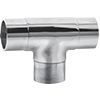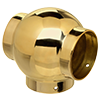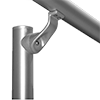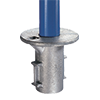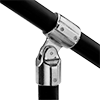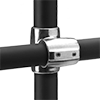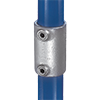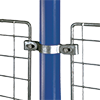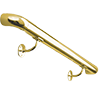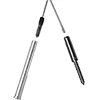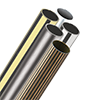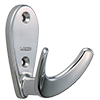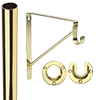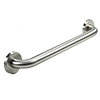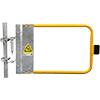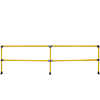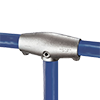stair-railing-dictionary
Stair Railing Dictionary
If you need to get stairs and railings installed in your home, it is important to understand the different components that comprise stair railings or architectural railing systems. This way, you will know which terms to use when ordering stair railings parts and accessories, so we decided to provide a handy Stair Railing Dictionary that we hope will be helpful
Baluster - This is the vertical component that is found between the railing and the tread or floor. The baluster adds support, safety, and stability to the balustrade.
Balustrade - This is the name given to the fully-assembled, complete rail system.
Box newel – This is a large square newel that is hollow inside. It is used in a post to post balustrades.
Box stair - This name refers to the box-like unit formed where the stringers house the treads and risers.
Bracket - This is a component of a stair railing system that is used for decorative purposes. It is scroll shaped and is usually mitered to the riser and fastened over the open stringer.
Cap – A cap refers to the round portion of rail fitting which widens and sets on top of a newel post. It is used for “over the post” balustrade systems.
Cove Moulding - Where the riser meets the bottom of the top stair treads, there may be little gaps that need to be hidden associated with installation. This is where the cove molding, a finishing trim, comes in to provide a clean finished look.
Easing - Sometimes referred to as an easement; the easing is the portion of the rail fitting which curves. This way, the handrail can move level up or down, up easing or over easing without difficulty.
Fillet - The thin molding fitted into plowed handrail and shoe rail between balusters is known as a fillet.
Finished Floor to Finished Floor Height – This refers to the total rise of the stair which is determined by measuring the vertical distance between the top of the lower finished floor to the top of the upper finished floor.
Glue block - As the name suggests, this is a wooden block that is glued to the underside of a step. Glue blocks are used where the tread and risers meet and form a corner under each step.
Gooseneck - Where the rake rail rises vertically to a balcony or landing, the rail fitting used there is referred to as a gooseneck. Goosenecks allow for directional changes.
Handrail – A handrail is the railing used for hand support in balustrade systems.
Header – A header is a floor framing component that travels across the well opening and secures the riser of the stairs.
Horse - To support treads and risers, lumber is cut a designated length to form the steps.
J Cap Moulding – This molding provides a mini nosing to cap the edge of sideboards giving a finished look to an unfinished edge.
Landing - This is the platform between flights of stairs, which allows for directional changes.
Landing Newel – This is the newel post used at landings and upper levels wherever the rake rail changes direction and continues or wherever a rake rail rises from top to bottom.
Landing tread -This is a tread-like mold that is used to form a level surface with the finished floor of landings and upper levels.
Left Hand Miter – refers to a stair open for balustrade on the left.
Level Quarterturn - To permit a level handrail to turn 90 degrees this rail fitting can be used with a cap or without a cap.
Level Rail – refers to the handrail used on the level portion of a balustrade.
Miter Return - This is a component of a stair railing system that is used for decora- In order to conceal the end grain, a nosed or rounded molding is used to trim, open-end treads.
Newels - These are the vertical posts used to start the balustrade. These posts are also used for vertical and directional transition. Newel posts are the backbone of the balustrade.
Open Stair Treads - A staircase where the stringer has been removed and the thread ends are exposed on one or both sides.
Over-the-Post - Forming a continuous handrail is possible with an over the post balustrade system using rail fittings on top of newel posts.
Pitch - Refer to the rake of the staircase or railing system.
Pitch Block - The pitch block of wood formed in a right triangle using the rise and run of a staircase also determines the angle cuts on balusters, newel posts, and handrails.
Plow - Square end balusters are fitted with fillet spacers and carefully placed in the grooved out area to form a plow in the bottom of the handrail and the upper section of the shoe rail.
Post to Post - A balustrade system where a handrail is cut between and then attached to square top newel posts.
Rail Bolt - A two-sided, threaded steel stud that contains a nut, washer and wood plug. You can attach a handrail to fittings and newels with a concealed fastener.
Rail Fitting - Fittings profiled to match handrail patterns allow for directional changes within the handrail in over-the-post and post-to-post balustrades.
Rake - The rake (angle or pitch of a stair’s ascent) is established by the rise and run.
Rake Rail - Handrail used on the ascending balustrade following the pitch or rise of the stair.
Right Hand Miter - A stair open for the balustrade on the right side, ascending the stair. The rail fittings on the right-hand side of a stair.
Rise – You can determine the rise (vertical height) by dividing the total finish floor to finished floor dimensions.
Risers - Risers are the vertical components of the staircase, on which the treads are placed.
Rosette - A decorative wall plate that can be round, oval or rectangular, anchoring the railing when the backing is inside the wall.
Shoe Moulding - A quarter-round type mold, that is usually applied where the bottom riser meets the finished floor.
Shoe Rail - A flat molded component with a linear groove to accept square bottom balusters.
Skirt board -A finished face board that is used to cover the stair horse or finish the area surrounding the well hole.
Starting Easing - A rail fitting located at the beginning of the balustrade system where the upward travel of the stair begins.
Starting Newel - The vertical post used to start a balustrade system.
Starting Step - This is a component of a stair railing system that is used for- A decorative first step of a stair that usually includes tread and riser – the most common designs are bullnose fully rounded, quarter circle or half circle.
Stringer - A side member of a stair that serves both carriages and finished facet that is mitered to the riser with treads set on top for open stairs.
Sub Rail - A thin linear mold plowed both top and bottom to accept a handrail above and the top of square end balusters immediately below.
Tread - The flat horizontal component of a stair step where someone walks (approx.. 1-1/16 inch thick.
Wall Rail - Handrail affixed to the wall by means of mounting brackets.
Wall Rail Bracket - An offsetting metal or hardwood bracket screwed to the wall where the wall rail is mounted.
Wedge - A tapered strip of wood driven into stringer routings to fasten treads and risers.
Well Hole - The opening frame above a stair that goes to the floor.
Winder - A landing divided by risers into triangular-shaped steps.
Wood Plug - A flat round wooden plug used to fill the holes made for concealed fasteners.



